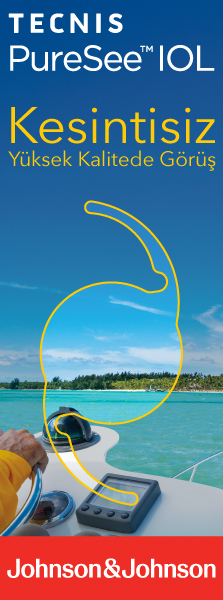2Bilecik State Hospital, Göz, Bilecik, Türkiye DOI : 10.37844/glauc.cat.2022.17.15 Purpose: To evaluate the refractive outcomes of phacoemulsification in patients with glaucoma under medical treatment.
Materials and Methods: The study group with medically treated glaucoma was prospectively compared with an age-and sex-matched, nonglaucomatous control group. Ocular biometry was measured with Lenstar laser interferometry. The difference between predicted and current postoperative refractive changes was calculated using intraocular lens (IOL) prediction formulae (Haigis, Holladay, Hoffer Q, and SRK-II) pre-operatively and post-operatively at the 1, 7 and 30 days. The difference between the current postoperative and predicted changes was considered 'Mean Error' (ME). The accuracy of different IOL calculation formulae was also compared by examining ME of the groups.
Results: 23 eyes in the study group and 20 eyes in the control group were included. The eyes in the study group had significantly more myopic shift than the control group according to Holladay, Hoffer Q and SRK-II measurements on day 1 postoperatively (p=0.01,p= 0.04,and p=0.001,respectively). Eyes in both groups had myopic shift at day 7 and day 30 according to these 3 formulae, but there was no statistically significant difference (all p >0.05). The Haigis formula had significantly more hyperopic shift in both groups postoperatively, except on day 1 in the study group. No correlation was found between ME and axial length (AL), anterior chamber depth (ACD), and intraocular pressure (IOP) change in all formulae(all p >0.05).
Conclusions: The IOL value can be more accurately calculated using the Holladay, Hoffer Q, and SRK-II formulae.The Haigis formula had significantly more hyperopic shift than the other formulae in both groups.
Keywords : Biometry, cataract surgery, glaucoma, intraocular lens calculation, Lenstar




